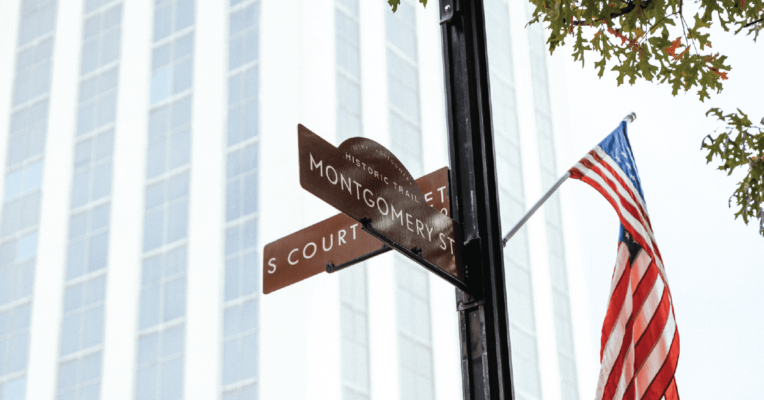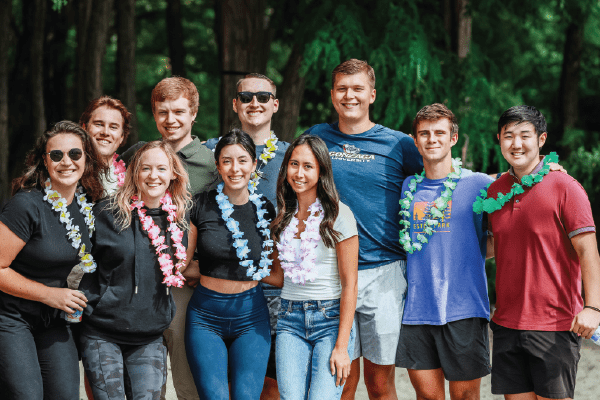Four true WELLth Episodes to Jump-Start Your Wellbeing
Brighton Jones’ true WELLth podcast provides listeners with simple tweaks and radical reboots to boost emotional, financial, physical, and social health. Our guests—thought leaders from a range of disciplines—provide personal wellbeing strategies in bite-size morsels for busy people.
As we near the end of a challenging year, it’s important to take opportunities to recharge. We went back through our true WELLth archives and chose four of our favorite episodes to share with you. These conversations cover the evolution of work, how we think about the future, the importance of movement, and more.
We hope you enjoy listening. You can subscribe to the true WELLth podcast on your player of choice: Apple Podcasts | Spotify | Stitcher
Cali Yost: Modern Careers – Embracing Work + Life Fit
At a glance:
- Work as a “what,” not a “where”
- “Work + Life Fit” is unique to the individual and can change over time
- Intentionally defining and celebrating success is key
- Work flexibility has the power to reboot the economy over the long-term
Technology and COVID-19 are working in tandem, creating a significant cultural shift in how, where, and when we work. In our current environment, implementing a flexible work culture enables businesses to continue to operate, with the bonus of providing workers greater freedom to define how to bring their best to their work daily. As corporations change their culture to adapt to remote work, the lines between work- and home-life are increasingly blurred.
How can employees fit their work life and home life together in this new archetype? What do these changes mean for corporate culture? Cali Yost, CEO of Work+Life Strategy Group, discusses how the current pandemic is accelerating the flexible work revolution. In this episode, Yost outlines her framework for developing a personal work + life fit blueprint and how that “fit” should change over time. Natural “masters” at work + life fit often find joy in celebrating their victories, which can feel foreign when perfectionism inhibits the feeling of success.
Gretchen Rubin: Simplify, Simplify, Simplify – Outer Order, Inner Calm
At a glance:
- Outer order contributes to inner calm
- Simple things done everyday matter
- It’s not about finding “the best” way to do things; it’s about finding YOUR best way
- Making good choices around possessions can keep order while retaining sentiment
“Love it? Need it? Use it?” These are three deceptively simple questions author Gretchen Rubin asks in her new book Outer Order, Inner Calm: Declutter and Organize to Make More Room for Happiness. Many have been searching for the “right” answers to these questions for centuries. America’s original declutter expert, Henry David Thoreau, moved to the woods by Walden Pond to, in his words, “live deliberately and confront only the essential facts of life.” As simple as these three questions sound, answering them may take a bit of patience, stamina, and self-reflection to get the answers ‘right.’
Rubin’s framework is the guide to help answer these questions with intentional, simple, and adaptive steps to accommodate many different lifestyles. There are plenty of books describing the joy of purging possessions, and that is where Outer Order, Inner Calm diverges from the current tossing trend. “There are emotions tied up in possessions. People value and use possessions to project their identity into their environment,” Rubin explains. “We use possessions as reminders of the experiences, the people, and the places we love.”
Bina Venkataraman: Heirlooms – The Optimist’s Telescope
At a glance:
- Thinking about the future is a choice
- Balance thinking about the future and being present now
- Embrace the role of the descendant in a bigger history
How often do we spend time thinking about the future? Not the days, weeks, or even months ahead, but years, lifetimes, or even generations? Bina Venkataraman spends her time looking forward, advising leaders on the latest biomedical and genomic research and the impacts on business over the long term. While her job is to take research and apply it to future consequences, Venkataraman realized that she was bad at applying that same discipline in her own life.
During her tenure in the Obama White House, she actively ignored early warning signs of Lyme disease that went unchecked for months. Her inability to read her own warning signs led her to ask the bigger question: is it inherent in human nature to avoid thinking about the future, even if ignorance may cause significant consequences over time?
What Venkataraman discovered was profound, spanning beyond her lifetime into those who both came before her and will follow her after she is gone. She believes that, in order to create the capacity to look at the future, one needs to be grounded in the present. This grounding creates space in the brain for the larger questions about role, purpose, and overall contributions to generations to come.
Martin Pazzani: Climb Mountains or Walk—Just Get Outside!
At a glance:
- The human body responds beautifully to a little stress
- Unplugging from the computer/TV/phone is the first step in overall wellness
- Start any physical fitness plan with baby steps, even just 20 minutes a day
- Bucket lists can provide milestones for healthy longevity
Eat right and get more exercise. These two ideas are the cornerstones of many healthy living plans. Yet the more we are inundated with new technologies, and, more recently, pandemics, stay-at-home orders, and even poor air quality, the current climate seems to be plotting against us.
Martin Pazzani, the author of Get Outside, has made it his mission to help as many people as possible change the trajectory of the way they age. His mantra? Just Get OUTSIDE! Launching into better aging is as basic as getting out and creating a little physical stress: a simple 20-minute walk sparks a cascade of benefits.
As humans, we are designed for walking (hiking, jogging, running, or walking uphill), which physiologically triggers our bodies in myriad ways. First, it exercises our eyeballs. Staring at a 2-D screen all day can cramp and damage our eyes over time. Outside in the natural light, eyes are stretched, stimulated, and used to look far away and up-close. A 20-minute walk will also elevate heart rate, increasing blood supply to vital organs, muscles, and the brain. And, when there’s more oxygenated blood circulating, positive, uplifting thoughts and brain health improve.
Pazzani fears that our current technology-dependent culture is creating a universal crisis of inactivity. Mental and physical fitness becomes more, not less, important as we age.




